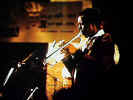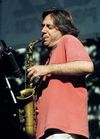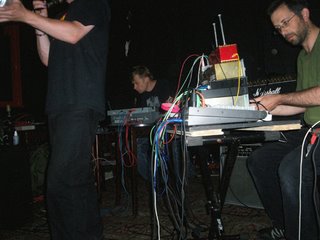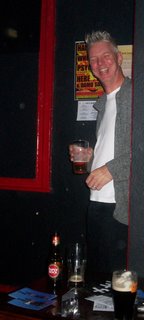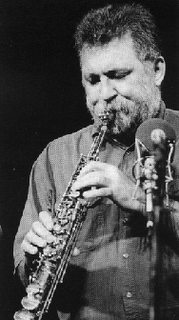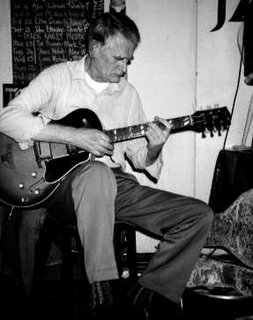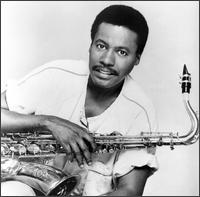
Sometimes it is a good idea to be reminded of where it all came from...
So – to start somewhere near the (recorded) beginning, Jelly Roll Morton and his Red Hot Peppers playing 'Black Bottom Stomp,' 1926, a fast-paced track which contains a strong ragtime feel in places that displays where much of jazz originally came from, as well as the straight ahead swing of the newer music of the twenties. What is interesting about many of his classic sides is the amount of thought and preparation that went into the recordings – this is not archetypal New Orleans collective improvisation. By the mid-twenties Morton had already evolved a mature style of composition/arrangement – and can arguably be regarded as the first great jazz composer. Using his seven musicians in varying combinations from full ensemble to solo he creates a diverse and ever-swinging work within the time frame of the medium - 3 minutes 13 seconds – stop time breaks, a clarinet and banjo passage, a solo piano chorus in the middle, trumpet switching from open to muted horn. Textures and timbres and rhythms ever moving and a ride out chorus with drum back beat that stomps off to glory...
My second choice moves back and forward in time – Bunk Johnson was re-discovered in the late thirties and, although no doubt past his prime, in his sadly brief second flowering was able to recreate some of the sounds of the New Orleans collective style. In this recording he was paired with the formidable Sidney Bechet, a man whose mastery of clarinet and more importantly soprano saxophone crossed idiomatic barriers in the same way that Louis Armstrong, his great and overshadowing rival did. The splendidly titled 'Lord let me in the lifeboat' has an easy loping swing to it, trumpet strongly holding the theme as the trombone and clarinet weave round it in classic New Orleans style. Trombone takes a short chorus backed by Bechet. Then clarinet, sticking to the chalameau register, pretty laid back by Bechet standards of pyrotechnical bravura and timbral power – on soprano saxophone he had a vibrato as big as Texas. As if adhering to the New Orleans collective conventions – and aware that he could swamp Johnson easily if he tried.
These two recordings indicate to me the different strands of New Orleans jazz – one coming from the cabarets and clubs and dances, the other the marching band. One more precise and arranged, the other more collective and fluid within the harmonic confines of the day.
Let's jump... and consider the speed of change in jazz over the century or so of its existence as a roughly defined idiom. The New Orleans style rapidly declined in popularity as 'hot jazz' gave way to smooth swing – Morton's vision for small band was sidelined very quickly (unjustly?), Bunk Johnson, when these recordings were made, was essentially playing in a dead and gone style compared to the main thrust of jazz of the time – swing's endgame now and the coming hurricane of bebop. Earl Hines was in at the beginning – in the mid-twenties recording with Louis Armstrong some of the classic sides which emphasized the shift away from collective improvisation to improvising soloists. Hines, in fact, could arguably be regarded as the father of modern jazz piano (in keeping with his nickname 'Fatha'). Up to his death he was still playing in a timeless manner that easily walked through the generational shifts in jazz. (One can similarly imagine that Art Tatum, if he had lived longer, would have similarly had no problem in keeping up with jazz developments).
Lionel Hampton made his first recording in 1924 as a drummer but would come to prominence in the thirties with Benny Goodman and later his own roughhouse roaring bands – on vibes:
'In 1930, Hampton was called in to a recording session with [Louis] Armstrong, and during a break Hampton walked over to a vibraphone and started to play. He ended up playing the vibes on one song. The song became a hit; Hampton had introduced a new voice to jazz and he became "King of the Vibes." ' (From here... scroll down...)
So... here is a track from a late date – 1977 – pairing the two, on this track, Errol Garner's 'Misty.' The point here being that Morton died in obscurity, a neglected figure – as did that other New Orleans innovator King Oliver who had helped to bring Louis Armstrong to prominence in his sublime Creole Jazz Band – and then been left in the dust of Armstrong's brilliance. Hines and Hampton could and did hold their own in any company, young or old, due to their abilities (and inclinations) to move through the jazz mainstream as it rapidly broadened and evolved. No great questions asked or answered – just straightforward easy swinging jazz by two virtuosi.
Hampton recorded a jam session with an interesting group in the sixties. J. J. Johnson leads in the melody of 'Stardust' with Hampton's vibes ringing behind in chordal accompaniment. Lucky Thompson (an often overlooked player of some brilliance) solos on soprano – Clark Terry on muted trumpet. Elegant. Hawk fragmentary, poking at the notes. A flowing, rhapsodic solo from Lionel.
Whose theme tune was 'Flying Home.' Here's Hampton leading in his orchestra - riffing and roaring – then , soloing briefly before the arrival of a swaggering Illinois Jacquet and high brass rips at the end from trumpeter Ernie Royal. This recording only gives a small flavour of what the live performance must have been like... when this tune was stretched out and pummelled to hell and gone to orgasmic crowd reactions... Hampton was seen as slightly beyond the pale because of his populist instincts by certain more sedate critics:
'Hampton's extroverted showmanship, including dancing on his drums and attacking the piano with two fingers, mallet-style, has dismayed purists and critics, but his skill as a swinging improviser has never been in doubt.' (From the brief Downbeat biography here... )
To what it became... By the early sixties, things had changed... to end on, two tracks from that time. First: the Ornette Coleman Quartet playing W.R.U. Ed Blackwell on drums, (the New Orleans connection... ) and Scott La Faro on bass, Don Cherry on cornet. Ornette's music is often regarded on one level as a return to some of the principles of improvisation perceived as intrinsic to early jazz – certainly the polyphonic linear dance of lines in his electric band Prime Time especially have an echo of New Orleans style. However, his acoustic performances, while more in the conventional jazz area, are a light year away technically and conceptually from early jazz. Yet – they capture something of the fresh spirit of the music's foundations... 'W.R.U' is an archetypal twisting and turning Coleman composition, sounding rather like a refracted bebop line, especially in the accurate unison of trumpet and alto. Cherry takes the first solo, a little tentative in places as Blackwell prods him continually, but he holds the course. La Faro not always at ease in this company sounds somewhat detached. Coleman solos, a wailing wonderful performance, accompanied superbly (as ever) by Blackwell who takes a brief but telling solo followed by La Faro with sure-fingered speedy rippling panache.
As mentioned above, Lionel Hampton's popularity as a live act often sat ill with jazz critics of the more purist strain who somehow missed the point of his orchestra's wonderfully reckless dancing-on-the-drums showman swerves into backbeat extravaganzas (proto-rock and roll?). Oddly, something of that horn honking excitement surfaces in the sixties new wave – especially with John Coltrane's searching workouts where he blows holes in the tunes to extend the acoustic space they inhabit. Here is Coltrane at Newport in 1963 – Elvin Jones had dropped out 'for personal reasons' as the euphemism went in those days, so Roy Haynes was on drums (Jones' frequent dep). Haynes was and is a master – on 'Impressions' the piano and bass fall quickly away to leave the drummer with Coltrane at full protean stretch. An interesting contrast between him and Jones – Dave Gitlin said of this concert
'What I remember: Roy Haynes played more like Elvin, less like Roy because of audience expectation? or a sense of competition? ' (From here...)
Maybe it's the mike placing on this live recording – Haynes is active and plays well but a level below the shattering power of Jones. Plenty of snap and crackle, nevertheless (Haynes' nickname is 'Snap Crackle'). Coltrane in 1963 was still playing within the accepted timbres of modern jazz saxophone - but stretching the boundaries of perceived performative length although this version of 'Impressions' clocks in at just under 16 minutes. Given the date and this band, one is almost tempted to add 'mere' to the duration. Yet – a caveat – jazz as a recorded medium had been dependent on the technology available – starting off with 78's, this meant about three minutes per side. When the long player arrived in the fifties, there was much more space available – but still restricted to the two sides of a record. Cds of course offer more time. But the medium has given a false impression maybe of what jazz performance can entail – how long should someone solo – how long is a piece of improvisational string? There are stories of legendary jam sessions that went on for hours, after all. Public performances were also not dictated by time factors to the same extent, beyond the set-length in clubs and dance halls and later concert halls. And – remember Duke at Newport the year that Paul Gonsalves took a bag full of choruses on 'Diminuendo and Crescendo in Blue' and blew the place up - sixteen choruses of full-tilt blues tenor, if I remember. So Coltrane was carrying on in that tradition here... Whatever, as the kids say... Coltrane could always build up a head of steam – and always had a large audience, despite his rapid artistic development, which left others gasping in incomprehension and occasional downright hostility in his stormy wake. Something about his playing hit home to many people... the spiritual quest manifesting through technical exploration... That mixture of the sacred and profane which is one of the dynamics of jazz and Afro-American music in general? It's almost as if at times Coltrane was taking the music back to something more primal, beyond the traditional dualism... a place where sacred and profane are just words describing the same feelings?
Hallelujah... oh play that thing...
In the videodrome...
Lionel Hampton and Patti Page here...
and Hamp with big band plus Betty Carter here...
and here... with the original Benny Goodman Quartet reformed...
plus a short clip of Roy Haynes...
Jelly Roll Morton
(Ferdinand 'Jelly Roll' Morton (p), Honore Dutrey (tr), (Omer Simeon (cl), George Mitchell (t), Johny St Cyr (banjo) John Lindsay (b) Andrew Hilaire(dr) ).
Download
Black Bottom Stomp
Buy
Bunk Johnson
Bunk Johnson (t), Sandy Williams (tr), Sidney Bechet (cl), Cliff Jackson (p) George “Pops” Foster (b), Manzie Johnson (dr).
Download
Lord let me in the lifeboat
Buy
Earl Hines/Lionel Hampton
(Earl Hines (p), Lionel Hampton (vib), Milt Hinton (b), Grady Tate (d) ).
Download
Misty
Buy
Lionel Hampton
Thad Jones, Clark Terry (tp), J.J. Johnson (tb,; Lucky Thompson (ss), Coleman Hawkins (ts), Hank Jones (p), Arvell Shaw (b), Osie Johnson (d), Lionel Hampton (vib).
Download
Stardust
Buy
Lionel Hampton
(Lionel Hampton (vib) and orchestra featuring Illinois Jaquet (ts)
Download
Flying Home
Buy
Ornette Coleman
Download
MRU
Buy
John Coltrane Quartet
(John Coltrane (ts), McCoy Tyner (p), Jimmy Garrison (b), Roy Haynes (d) ).
Download
Impressions
Buy

